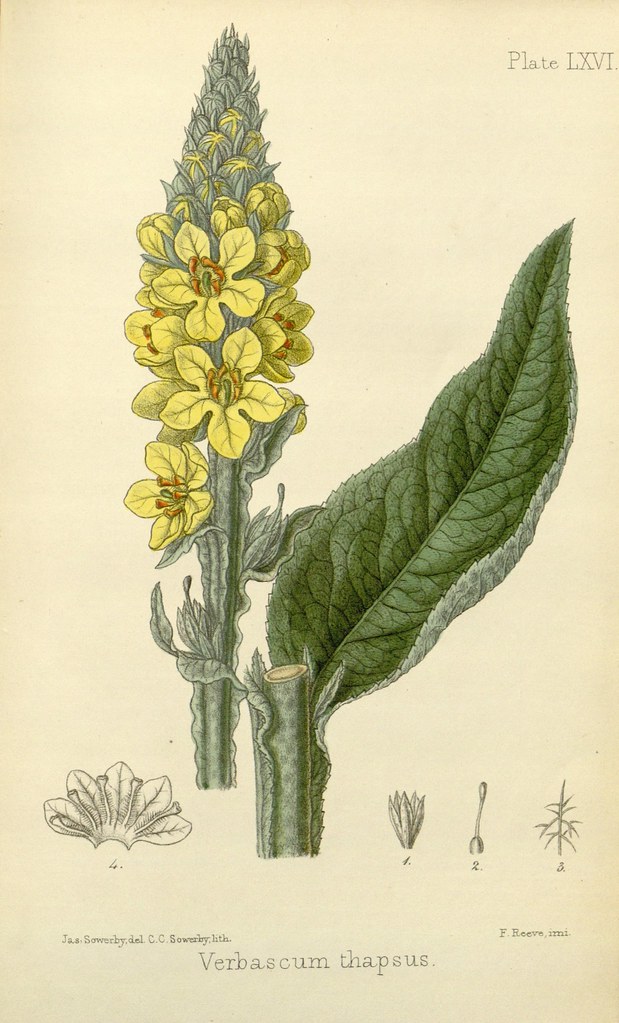#mullein
Text

From the 10th of July a few years ago.
427 notes
·
View notes
Text
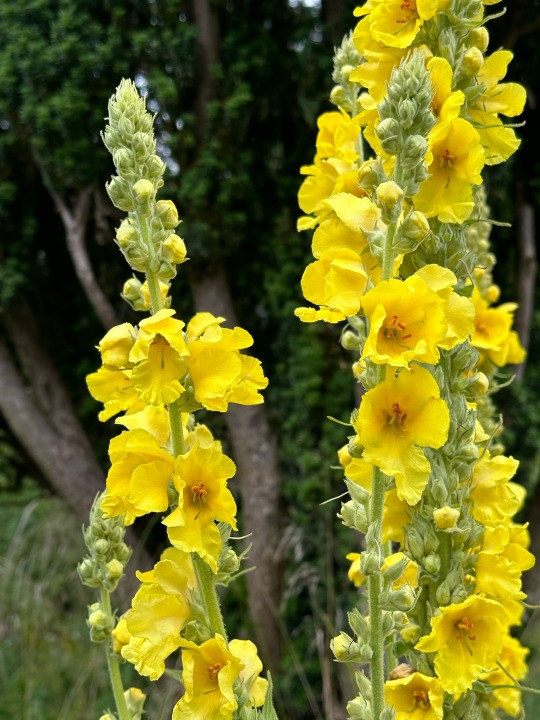

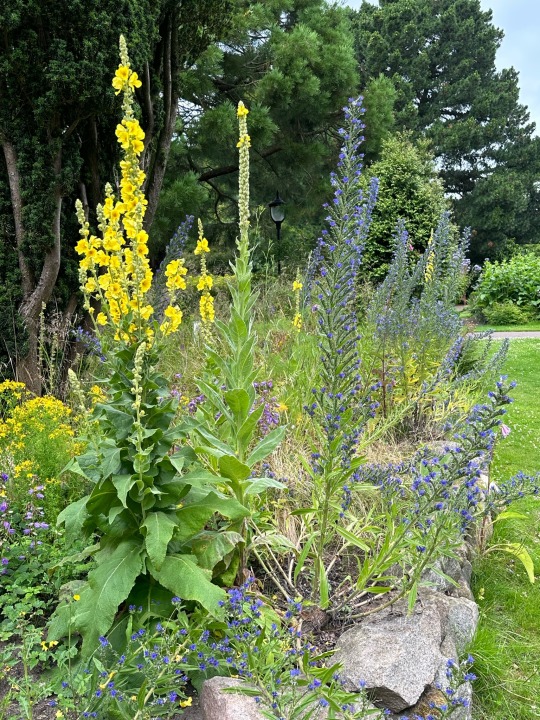
Plant of the Day
Thursday 10 August 2023
The biennial Verbascum thapsus has an amazing collection of common names including: Aaron's rod, ag leaf, beggar's blanket, bullock's lungwort, candlewick, clown's lungwort, common mullein, cow's lungwort, duffle, feltwort, flannel leaf, fluffweed, hare's beard, hedge taper, Jupiter's staff, king's taper, lady's candles, lady's foxglove, light of the Lord, lucernaria, mullein dock, great mullein, rag paper, shepherd's club, torch lily, torches, velvet dock, woollens, woundweed.
Jill Raggett
145 notes
·
View notes
Text
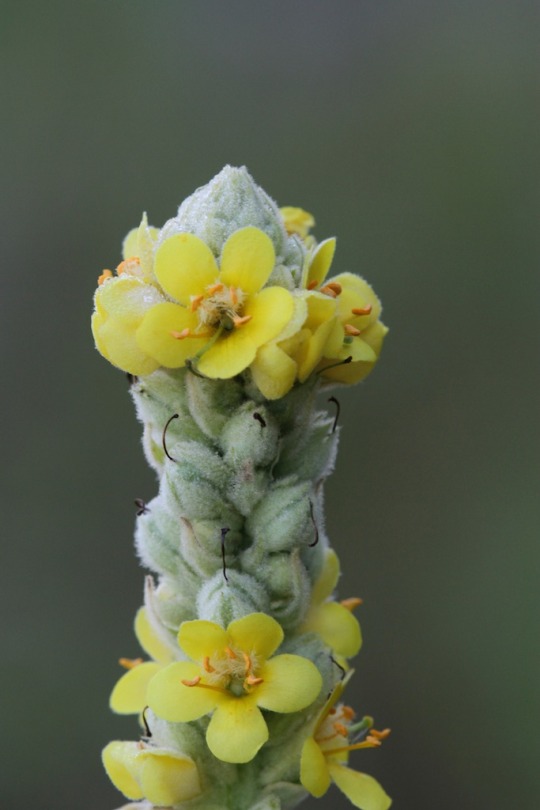
"One person's weed is another person's wildflower.” ~ Susan Wittig Albert
127 notes
·
View notes
Text
Herbalism 101: Mullein
EP. 3

Fun fact! In the 1700s, the United States first used Mullein as a way to poison fish!
Properties: Protection, health, courage
Uses in the Kitchen
Mullein unfortunately is not the best tasting herb. Because of this, it is rarely included in recipes. However, the most common way to consume Mullein is by making it into a tea. This way you can add another herb or tea to balance the taste.
Uses in Healing
One of the most common uses for Mullein, dating back thousands of years, is targeting respiratory issues. The modern use of this is many smokers use Mullein tea to loosen congestion and help clear the lungs. Infused in olive oil is often used to clear ear infections as well. 
Uses in Witchcraft
Mullein has many uses in witchcraft, but my personal favorite is keeping a small pouch of it under my pillow and in my purse to help ward off nightmares and bad spirits. Hanging it in your doorways is another effective way to do this. Ground Mullein is sometimes used as a replacement for graveyard dirt in certain spells.
Tips for growing it at home
Mullein is very weed-like, it needs a lot of Sun and is very resilient. This plant is often found in overgrown fields and abandoned buildings. It is also pretty easy to grow from a seed. Early spring is the best time for planting especially if you want to grow it indoors. They do not need a ton of water, but well drained soil is best.
Recipe
Unfortunately, this is not a commonly used herb in cooking. My suggestion is to give mullein tea a try! You can purchase it pre made or you can get straight up dried mullein and make your own!
#herbalism 101#kitchen witch#green witch#cottage witch#herbs#magick#spellwork#herbalmedicine#herbalism#witchcraft#witch#mullein
125 notes
·
View notes
Text
22 September 2023 - Friday Field Notes
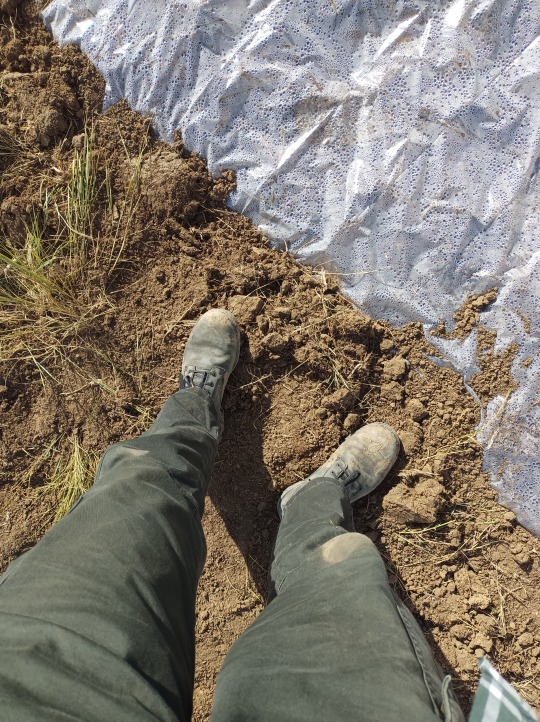
Field work is not glamorous.
It doesn’t matter what field you work in. Often times you’re outside for hours on end, the weather doesn’t cooperate when you need it too, you’re covered in sweat, in dirt, you’re overworked, you’re underpaid, your organization is understaffed, you don’t have the resources or the equipment you need to do the work, and trying to get people to give a shit and effect the change that needs to happen is a perpetual uphill battle that rivals Sisyphus’s eternal punishment. But you adapt, you improvise, and you do the work anyway.
Because it’s important. Because it matters. To me. To you. And to every living thing on this planet. You do it so things can grow and thrive.

Part of my job doing restoration work is removal and management of invasive species, like this Mullein pictured above. Now, Mullein is a plant that originated in Europe and Asia and was brought over to North America for cultivation purposes.
However, it didn't originate in the ecosystems in N. America, didn't evolve along with the local flora and fauna, it has no biological checks in the Great Plains to keep it from overrunning an area like it would in Europe or Asia. Not having any biological checks allows species to create monocultures, which isn't great because it reduces the overall biodiversity of an ecosystem, making it less robust and unable to support the vast array of wildlife you should find in a given area. Some species in the Great Plains do utilize the Mullein as a resource, but again, since it didn't evolve here many species are essentially losing food and habitat because of this plant.
Monocultures also reduce the effectiveness of a habitat's ecosystem services that help support life for all living organisms. Including us. Clean air, clean water, nutrient rich soil to support the growth of food, capturing carbon to sequester to reduce climate change... All reliant on biodiversity. All reliant on populations of native plants.
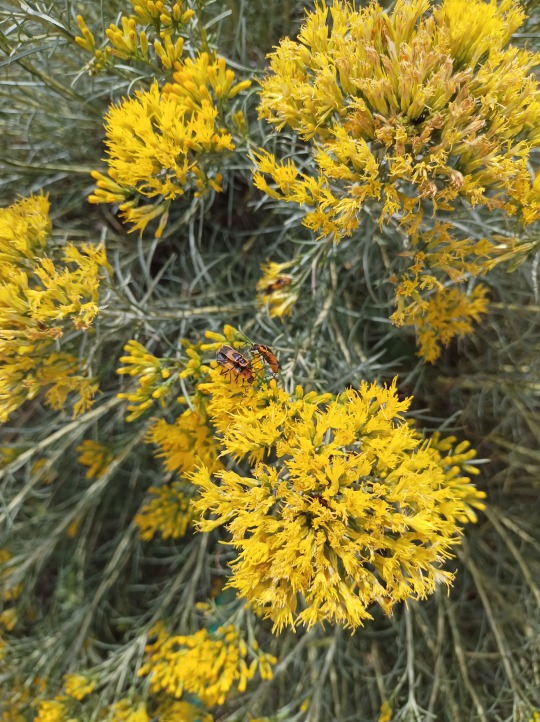

It's not enough to just remove invasive species though. You can't take something out, without putting something back in. Good land management and stewardship practices should also restore ecosystems. Rabbitbrush and Rocky Mountain Bee Plant are both species that are native to my local area, and are a resource for all manner of species.
And that Bee Plant, we planted that last season. It was the only one that grew, but look at all the seed pods on that thing! Hopefully those seeds will go on to make even more Bee Plants and support even more wildlife!
I watched this documentary series last week for work and I'd highly recommend it. It's about the native seed supply chain in the western United States for restoration efforts. A really large area, that needs as much helps as it can get.
https://ser-insr.org/native-seed-film - You can watch it in sections, or they have a couple of different lengths depending on the time you have. But if you only have 12 minutes to give, for sure watch the introduction.
Now, I'd like to point out, these large scale efforts are important, but restoration efforts don't have to be big or elaborate. If you have a spare planting pot or a backyard, you have the ability to restore native habitat. You can bring those ecosystems to you. And it doesn't necessarily require you tearing out your whole yard or sacrificing the plants you do grow.
It may require a bit more homework (you're gonna have to research what plants are native to where you live), and some trial and error, but there are a lot of gorgeous native plants out there that require very little work once they're established compared to "traditional" garden plants.
Humans have carved out huge swathes of land for our own purposes, often to the detriment of other living things and ourselves. We've destroyed entire habitats and ecosystems due to human vanity and simply walked away. Cut our losses. Those habitats and ecosystems are lost. But the land is not gone. And who's to say all those things that are lost can't be found.
It's not easy work, but with some compassion, and a little bit of knowledge, and the willingness to be patient, perhaps we can weave the land back together. Not the way it was, but rather better.
A ghost can dream, right? And perhaps this Pronghorn does too.

It's hard to appreciate the subtle beauty of the prairie. It's not a forest. Not the ocean. Most people might only see grass and not see the richness. The diversity. But I've done a shit-ton of digging this week to try and install a native plant garden.
Field work, manual labor and sweating outside with a shovel, is not glamorous.
But I'm doing this so people can hopefully see the beauty of the prairie, so they can see the beauty in the land around them and perhaps consider planting some native plants of their own. So every living thing out here, big or small, can have a home.

And here's a Megacyllene (sp?), probably a Locust Borer Beetle. It has wasp stripes to dissuade predators from trying to eat it.
#nature#field notes friday#restoration work#short grass prairie#plants#habitat restoration#native plants#locust borer beetle#pronghorn#rocky mountain bee plant#rabbit brush#mullein#land management#land stewardship#native seed restoration#little ghost on the prairie
27 notes
·
View notes
Text
[ Great Mullein : a small collection of superstitions from France.]
In Antiquity, this plant was used to make wicks for lighting. In the 18th century, it is found associated with a few fires charged with magic.
In Loir et Cher and Somme, great mullein is used to make torches for Brandons Day (the first Sunday of Lent), rods which are then placed above the door of the stables to protect the cattle from disease and evil spells.
The spongy leaves of the plant are believed to absorb venom into the blood. It is said that a weasel bitten by a snake will roll in mullein and some Poitou healers use it for viper bites. In Vienne, a rabid dog is cured by rubbing it with fresh mullein juice.
Ancient medieval recipes (…) require the performance of a magic rite :
To cure scrofula*, one heats a leaf of white broth drizzled with wine that a virgin girl must put on the evil while invoking Apollo.
Against quartan fever, you have to get a foot of mullein while reciting a rosary, without speaking or greeting anyone. It is then pulled out with its root, the whole thing is thrown to the wind and the patient is cured. (Thiers, 17th century)
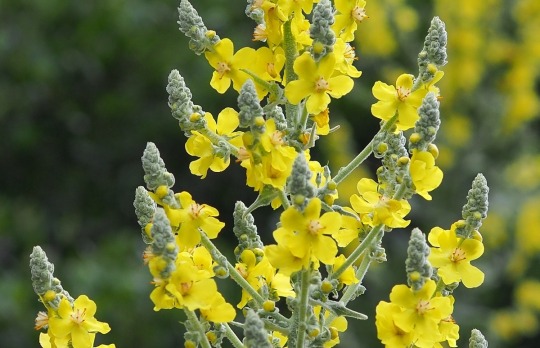
-
*Old name of chronic cervical adenitis, of tuberculous origin, which gave rise to a cold abscess which fistulized durably, then left scars (...)
(Excerpts from MC Delmas + the Larousse. Pic @herba-disula )
59 notes
·
View notes
Text
#2098 - Verbascum thapsus - Great Mullein

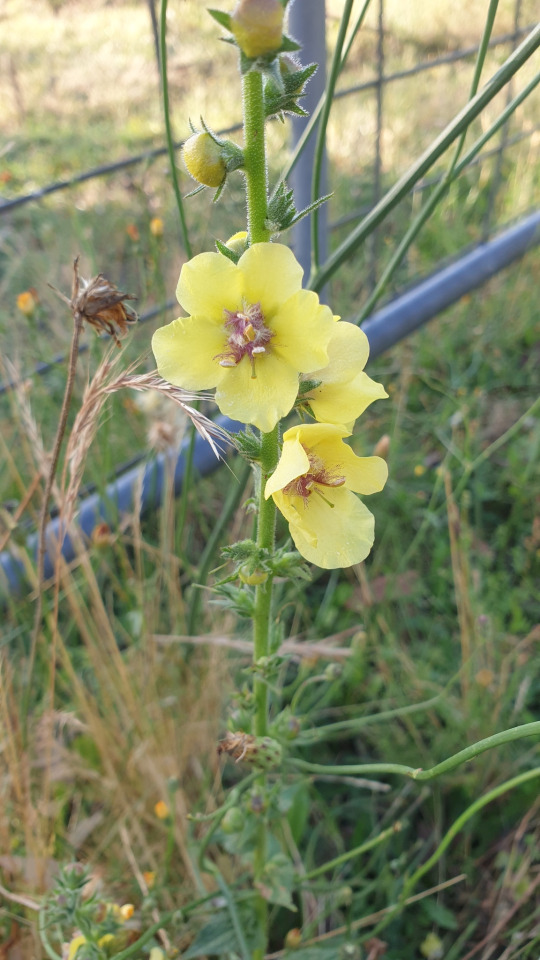

Another weed that I kept running into in New South Wales and in New Zealand - the last photo is from the southern end of a lake in the Southern Alps.
First scientifically described by Linnaeus in 1753, using the Latin word for the plant as the genus. Common names in English have included hig candlewick, Indian rag weed, bullicks lungwort, Adams-rod, spepherd's club, hare's-beard, poor man's blanket, feltwort, and flannel. Mullein itself derives from the French for soft.
Like the previous weeds, native to Europe, western Asia, and parts of northern Africa, but now invasive in most other parts of the world. Surprisingly, not a major weed in cropland - it doesn't tolerate shade from other plants, or tilling. Disturbed soil in sunny areas, on the other hand, is ideal.
These photos were from Tumbarumba in NSW, and Lake Pukaki in NZ.
5 notes
·
View notes
Text
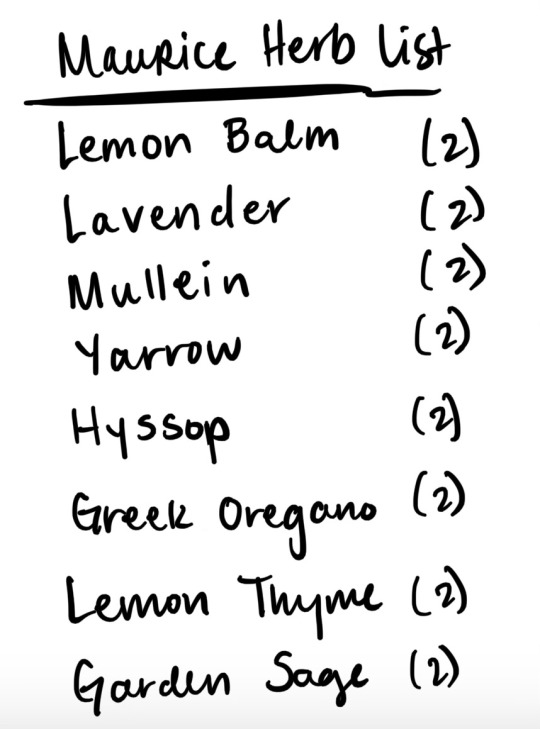
Working on a few new medicinal and culinary herb beds and this is the list of herbs that we will be transplanting. Photos and updates following.
#atlanta urban ag#Whitehall Terrace Community Garden#DoltForThePermaculture#herbs#medicinal herbs#culinary#culinary herbs#Aglanta#lemon balm#lavender#mullein#yarrow#hyssop#oregano#thyme#sage
33 notes
·
View notes
Photo
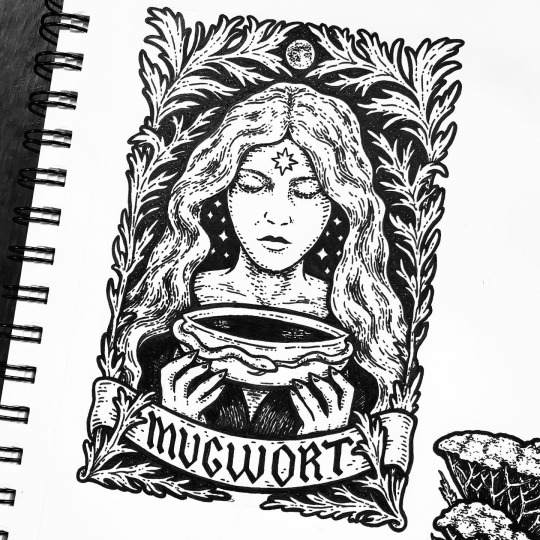

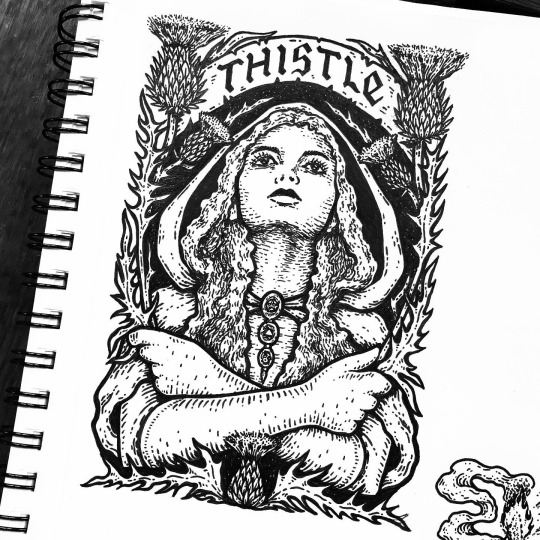

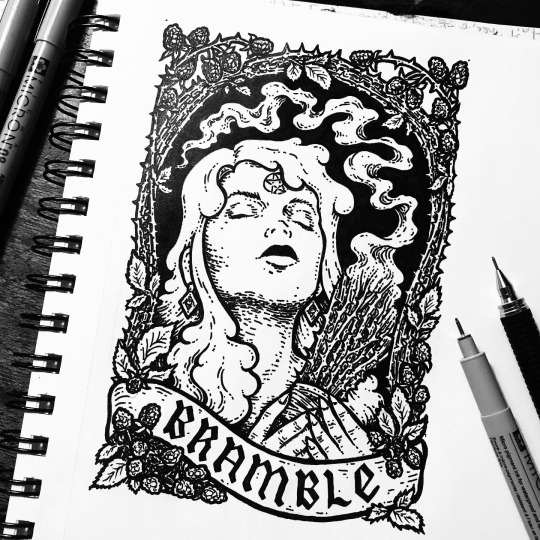
Witch’s Cabinet series by Adrienne Rozzi of Poison Apple Printshop
Each drawing depicts a magical use for each plant.
© Poison Apple Printshop
#poisonappleprintshop#witches cabinet#herbalism#herb witch#folk witch#poison apple printshop#bramble#yarrow#mugwort#mullein#thistle#witchcraft#herbcraft#folk magic
151 notes
·
View notes
Text
Graveyard Dirt/Graveyard Dust
Wherever there are burials, there are cemeteries. Wherever there are cemeteries, graveyard dirt is used in magic spells. (Ashes and dirt from cremation grounds are used too.) Graveyard dirt is among the most crucial, important magical ingredients and a prime component of many, many spells.
The use of dirt dug from cemeteries or graces is fairly standard universal magical practice; where traditions differ is whether this practice is considered entirely malevolent or not. Graveyard dirt, by the very nature of where it comes from, will be used as a tool of curse and hexing spells, however, is the material inherently malicious and toxic? In general, the answer to that question depends upon what role, if any, the dead play toward the living. Cultures who perceive ancestral spirits as being positive and helpful, such as many deriving from Africa and Asia, cultures who aren’t fearful of the dead, in general (as opposed to an individual threatening ghost), often use graveyard dirt for benevolent purposes.
On the other hand, those who perceive the dead as malevolent and threatening will simultaneously perceive the cemetery as a place of toxic, perilous power. For instance, among certain Native American cosmologies, the soul is entirely transformed by the dying process. What remains accessible on Earth has no benevolent purpose and retains no specific memory of past relations with the living. In that case, any contact with a dead body or with cemeteries is potentially contaminating, both spiritually and physically. The power may be harnessed but only for evil: the sorcerer who delves into graves is contaminated and potentially contaminating as well.
What actually is graveyard dust? At its most basic, it’s dirt from a cemetery or from a specific grave. However, graveyard dirt or dust is also a nickname for various botanicals, with no actual relationship to death. Valerian, for instance a strong insomnia aid with a foul smell, is called graveyard dust because it promises that you’ll sleep like the dead. Patchouli is often called graveyard dirt, because of its unique wet earth aroma.
Some practitioners pick up a handful of surface dirt from the cemetery
Some practitioners obtain dirt by digging within a grave. An entire science exists of precisely whose grave suits which magic spells, ranging from that of your mother’s grave to that of a murderer to that of a young child
Some practitioners wouldn’t be caught dead with actual dirt: they use either one or blend of several botanicals: powdered mullein, powdered patchouli, or powdered valerian
There aren’t arbitrary choices. In addition to the reasons given above for patchouli and valerian, mullein is under the dominion of both Hecate and Oya, two powerful spirits with strong associations with death and cemeteries
Some practitioners like to combine botanicals with dirt. Sometimes real cemetery dirt is used, while other practitioners feel that the addition of graveyard dirt botanicals transforms any dirt into graveyard dirt
Graveyard dirt must bee seen within the context of all kinds of dirt being used as amulets and spell ingredients. Dirt from shrines and sacred areas was painstakingly preserved and carried. People carried bits of dirt from graves of saints, holy people, and loved ones, perhaps purely as souvenirs and talismans, perhaps for other reasons. For millennia, Jews carried pouches of dirt from Jerusalem, laying it in the grave after death. Romany collected dirt from the legendary seven luck mountains. Dirt from North African shrines is brought home and sprinkled over hand-made fabrics and carpets to imbue them with the power and protection of the saint. Perhaps the most famous modern example is the Shrine of Chimayo in New Mexico, where thousands of pilgrims converge each year to receive a bit of miraculous healing dirt.
Looked at from that perspective, the use of botanicals instead of real Earth seems euphemistic. On the other hand, perhaps dirt itself is a euphemism. What exactly is being collected in the cemetery under the guise of graveyard dirt? If one digs deeply for dirt within an old grave, particularly one conforming to spiritual traditions that bury the body in nothing more than a shroud or a wooden coffin that disintegrate quickly, there is an inherent implication that one is really looking for some part of the body that has returned to Earth. People used to be far less squeamish than they are today nor were they necessarily as concerned about sanitary hygiene. Relics, purportedly pieces of a saint’s actual anatomy, were prized, collected and sold. It wasn’t even necessary to dig in graves for relics. Public executions created a whole other venue: following the execution of Jacques de Molay, last Grand Master of the Knights Templar, spectators gathered up his ashes, as was done with Joan of Arc and countless others. What exactly was done with the ashes?
Methods of graveyard dirt collection vary. Some believe there’s no need to dig; dirt from the Earth’s surface, provided that it’s contained within the cemetery walls, is sufficient to constitute graveyard dirt. Some like the dust clinging to a tombstone. That’s not sufficient for everyone. Some commercial purveyors of graveyard dirt advertise different levels of dirt, taken from varying depths, depending upon the purpose of your spell. According to British magical traditions, graveyard dirt is ideally taken from the top of the coffin, just above where the heart of the deceased would be. According to Hoodoo traditions, three scoops of graveyard dirt should be taken, one from over the head, one from over the heart, and one from below the feet of the deceased.
There are discreet methods of collecting graveyard dirt in broad daylight:
If you only required a handful, gather it and carry it home in your pocket or in a talisman bag
If you need more substantial quantities, rather than cut flowers, bring potted plants to transplant onto the grave. Dig a hole for each new plant, reserving the dirt. Carry the graveyard dirt home in the plant’s emptied container, creating a dirt transfer if you will
In some traditions, gifts of coins or libations are made to appease the spirit of the dead whom you may have disturbed, particularly if one is doing some serious digging. Remember to drop the gift in the hole.
Graveyard dirt is used for both benevolent and malevolent purposes. Some examples are offered here in order to give a sense of nature, power, and scope of the material, however graveyard dirt spells will be found amongst ever possible magical category.
(from The Element Encyclopedia of 5,000 Spells by Judika Illes)
57 notes
·
View notes
Text

Hag Tapers are such a useful and simple magical device.
33 notes
·
View notes
Text

Decided I might start doing a little postcard-style series featuring my characters! This one is Mullein on the beach!
╔══════╗
GAOMON PD1560
MedibangPAINT Pro
╚══════╝
#anime art#original art#original character#oc art#fantasy art#beach#beach art#postcard#oc#mullein#flowers#floral
6 notes
·
View notes
Text



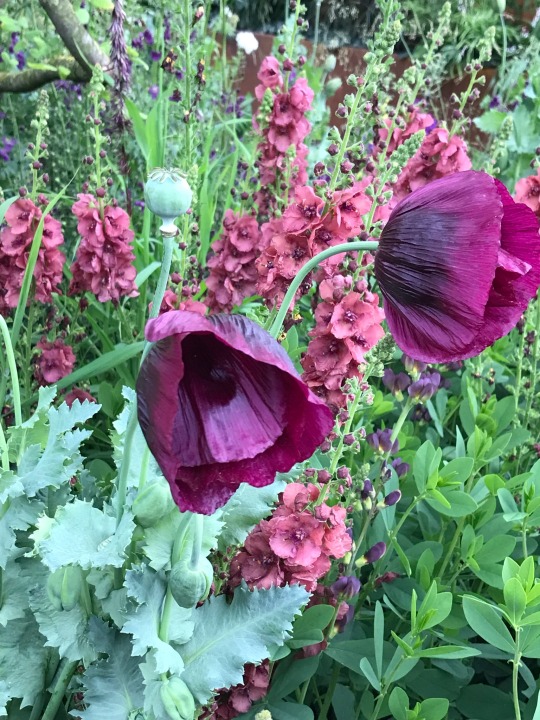
Plant of the Day
Thursday 30 June 2022
In this planting the cultivars of Verbascum (mullein), Baptisia (false indigo) and Papaver (poppy) compliment each other with their flower colour but have contrasting forms.
Jill Raggett
#verbascum#mullein#baptisia#falseindigo#papaver#poppy#pinkflowers#purpleflowers#herbaceousperennial#annual#plants#writtledesign#gardens#horticulture#garden#cottagegarden#chelseaflowershow
154 notes
·
View notes
Text

✨Kinship✨
Mullein follows me everywhere, always finding an excuse to grow outside my bedroom window. All the times I’ve moved in my life, I am honored that she wont let me do it alone.
.
.
.
.
.
.
.
Day 9 of creative prompts by @bloodmilk and @cchelseawwolfe
.
#octoberchrysalis #creativeprompts #mullein #plantmagic #magicalplants
8 notes
·
View notes
Video
n250_w1150 by Biodiversity Heritage Library
Via Flickr:
The flora homoeopathica :. London :Leath & Ross,1852-1853.. biodiversitylibrary.org/page/6026992
#Botany#Medical#Homeopathy#Materia medica and therapeutics#Materia medica#Vegetable#Pictorial works#Missouri Botanical Garden#Peter H. Raven Library#bhl:page=6026992#dc:identifier=http://biodiversitylibrary.org/page/6026992#flickr#verbascum thapsus#Great mullein#mullein#greater mullein#common mullein#botanical illustration#scientific illustration
14 notes
·
View notes
Text
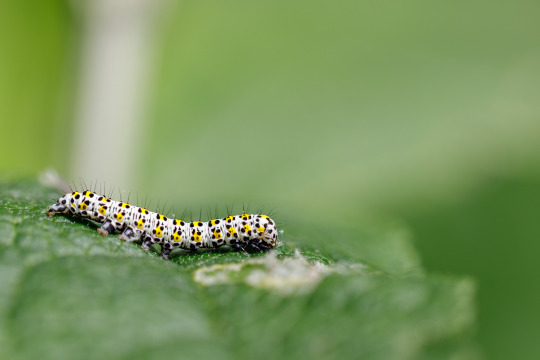
Feeding Mullein
A mullein moth caterpillar feeding on a buddleja leaf in the garden.
#30dayswild#canon#canonuk#caterpillar#caterpillars#cucullia verbasci#fauna#garden#insect#insects#invertebrate#invertebrates#minibeast#minibeasts#mullein#mullein moth#nature#outdoors#spring#springwatch#wildlife
7 notes
·
View notes
